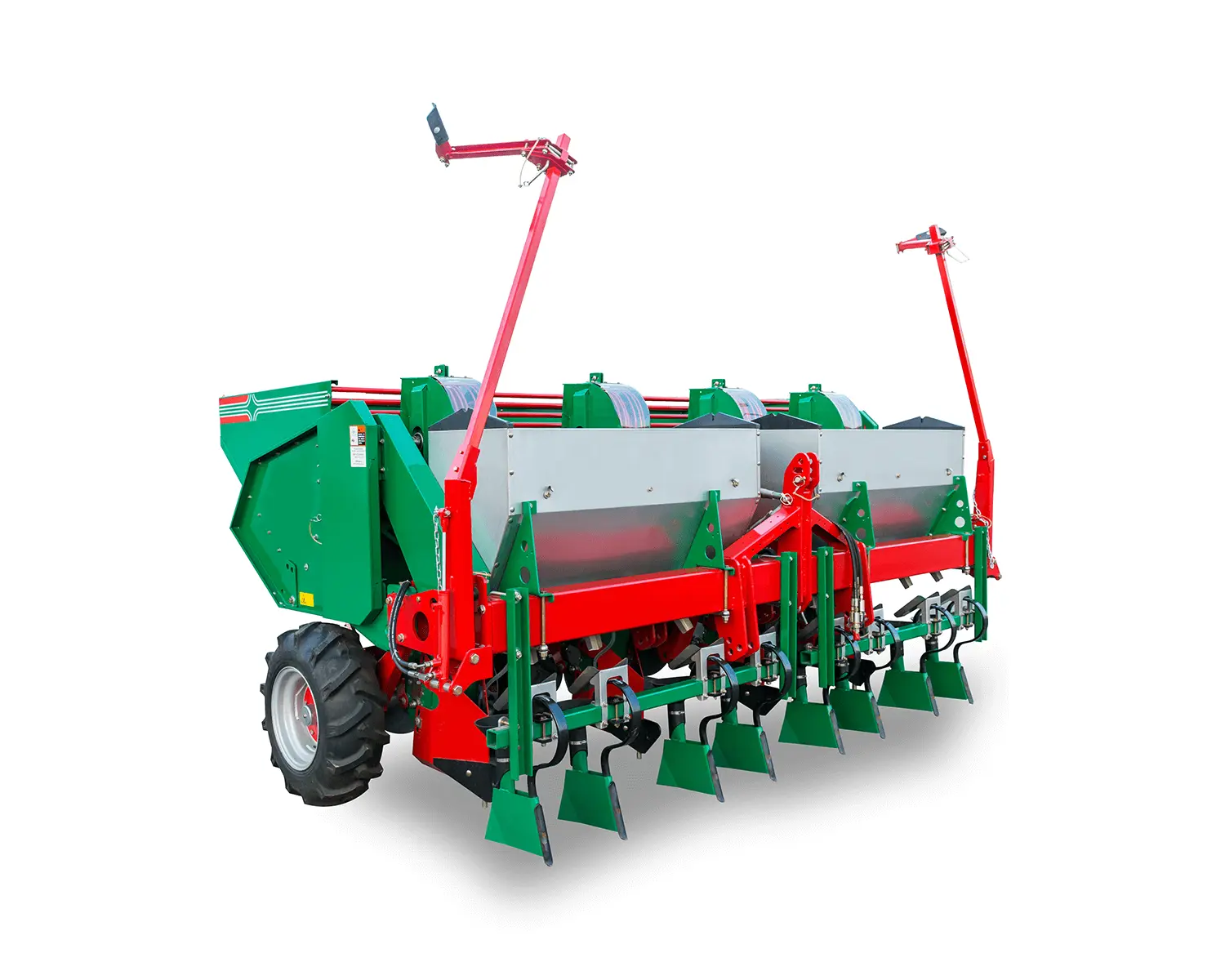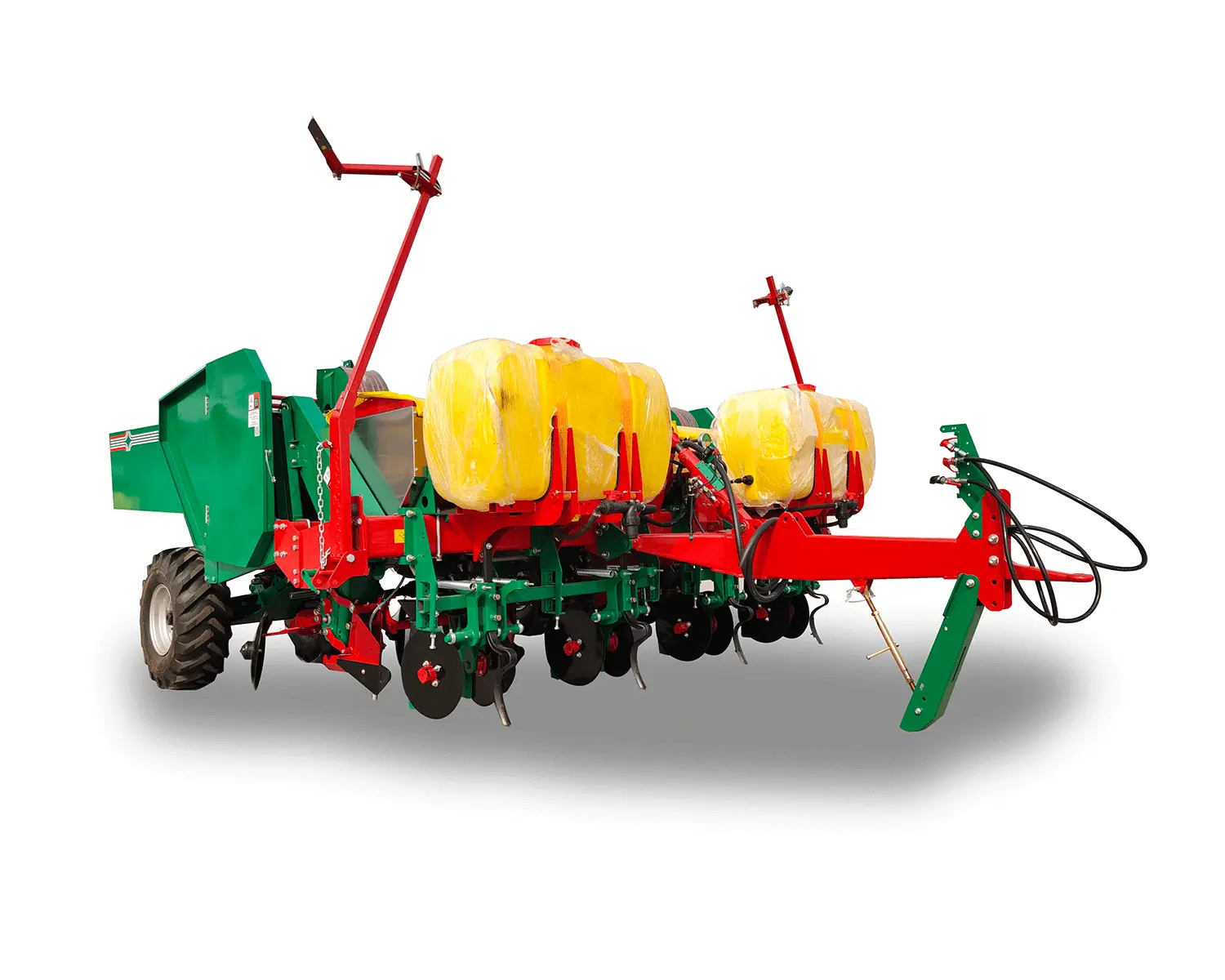Revolutionizing Potato Farming: A Deep Dive into the Latest Potato Planter Technologies
The Evolution of Potato Planting Technology: From Manual to Mechanized
At the beginning of the 20th century, Western developed countries began to plant potatoes in large quantities, and mechanical agricultural tools gradually appeared to assist manual planting. Their structures were relatively simple and reduced the labor intensity of workers.By the late 1930s, machinery capable of entirely replacing manual potato planting emerged. In the early 1950s, large-scale mechanization of automated planting began to gradually emerge. With the refinement of the potato planting industry chain, foreign potato planting machines gradually began to develop towards intelligence, significantly improving the efficiency and quality of planting operations.A notable example is the Grimme's invention in Germany. Over the past 20 years, machines have been added for sowing, cultivating and warehousing the delicate tubers, which are significantly influenced modern designs.
Comparing Mounted vs. Trailed Potato Planter: Features and Benefits
-

Mounted potato planter have the following characteristics.
- Precision Seeding: Reduces seed leakage rate from less than 15% to below 10%
- Consistent Depth Control: Enhances depth consistency across varying soil conditions, promoting uniform germination.
- Spraying System: Utilizes PTFE nozzles for higher atomization, improving coverage and pest protection efficiency.
- Efficient Planting: Improves seed spacing accuracy from at least 67% to over 85%, leading to more uniform crop growth.
-

Trailed potato planter have the following characteristics.
- Greater Planting Capacity: Large seed and fertilizer capacity for longer runs without refills.
- Enhanced Efficiency: Allows rapid, efficient planting over large fields.
- Versatility: Includes fertilization and pest control systems for multifunctional tasks.
- Increased Crop Yields: Provides accurate and consistent planting for higher yields.
Cutting-Edge Innovations in Potato Planter Design and Efficiency
The design of the mounted large potato planter features precision-engineered stainless steel funnels that direct the fertilizer accurately into the distributors.This system ensures even and efficient distribution of fertilizer, optimizing growth conditions for the planted potatoes.What’s more,it is equipped the soil-covering discs component of a state-of-the-art potato planter.These durable, black discs are strategically designed to efficiently cover the planted potatoes with soil, ensuring optimal growth conditions.Each disc is equipped with a spring mechanism, allowing for flexibility and adaptability to ground contours, which helps in maintaining consistent soil coverage and depth.This essential part of the machinery is equipped with sharp, green-painted blades and black coulters, meticulously engineered to create uniform trenches for potato planting. Mounted on a robust, red and green frame, these units are positioned for optimal spacing and depth control, ensuring that each potato is planted in ideal conditions for growth. The system also includes a fertilizing mechanism, which applies the necessary nutrients directly into the trench, promoting healthy crop development.
The design of trailed heavy duty potato planter features precise trenching discs and soil-loosening flexi-tines mounted on a sturdy green frame. Designed for efficient furrow cutting and soil preparation, this unit includes adjustable tension springs and depth controls, ensuring optimal conditions for seed planting and maximizing agricultural yields. Secondly,The trencher, distinguished by its robust design, is adjustable via a small ground wheel, allowing farmers to set the depth of seeding and trenching according to specific needs. Adjacent to the trencher is the pesticide sprayer, engineered for efficient chemical application to protect the crop from pests and diseases.
The Rising Global Demand for Potato Planter: Market Insights and Growth Forecast
As of 2022, the global market size of potato planter reached $330.2 million. It is projected to increase to $483.06 million by 2030, with a compound annual growth rate (CAGR) of 4.8% during the forecast period. In regions such as the Andes, where potatoes originated, traditional and modern planting methods coexist, reflecting a blend of cultural heritage and technological adoption. Conversely, large-scale farms in North America and Europe predominantly use advanced machinery for efficiency and labor reduction.Farmers are increasingly adopting potato planter because these machines are designed to ensure precise and uniform spacing between potato seeds, thus contributing to increased yields. They enable faster and more efficient planting compared to manual methods. Governments also provide some programs to assist farmers in adopting such machinery.
How Modern Potato Planter Are Revolutionizing Agriculture with Environmental Benefits
Potato planter also have several environmental advantages. Firstly, they reduce the need for pesticides and fertilizers due to their precise seed placement, thus minimizing chemical pollution of soil and water bodies, and promoting ecosystem health. Secondly, they conserve water resources by efficiently managing soil moisture, reducing loss and evaporation. Thirdly, they contribute to soil conservation by minimizing compaction and erosion, preserving soil structure and quality. Additionally, modern planters are designed for energy efficiency, utilizing advanced power systems and materials to reduce energy consumption and carbon emissions. Finally, by reducing chemical inputs and soil/water pollution, potato planter help maintain biodiversity and ecological balance in surrounding ecosystems.
Maximizing ROI: The Economic Advantages of Using Potato Planter in Agriculture
First of all, the potato seeder can automate operations such as sowing, fertilizing and covering soil, maximizing planting efficiency. Instead of traditional manual sowing, using a seeder can save time and labor costs. Second, the automated features of the planter reduce reliance on manual labor. Farmers no longer need manual labor, thus reducing the cost of hiring workers. Furthermore, the seeder can precisely control seeding distance and row spacing to ensure uniform planting density. This helps improve potato yield and quality. In addition, some planters also combine spray fertilization and weeding functions, reducing subsequent tillage and management work and further improving the overall efficiency of planting.
In short, the use of potato seeders not only improves production efficiency, but also reduces labor costs, which has positive significance for the development of the potato industry.
Expert Guide: Choosing and Maintaining Your Potato Planter for Optimum Performance
Choosing the right potato planter involves considering various factors, including farm size, soil type, and the specific needs of the potato crop. When purchasing a potato seeder, you need to refer to detailed product data charts, such as working width, working rows, productivity, etc. Experts recommend selecting a planter that offers adjustable spacing and depth settings to accommodate different potato varieties and field conditions. Regular maintenance and calibration are also crucial for ensuring the machine's longevity and performance.
Predicting the Future: Next-Generation Trends and Technologies in Potato Planting
Application of Smart Technology
Future potato planter will become more intelligent, employing advanced sensor technology and control systems to achieve fully automatic planting, planned driving trajectories, and monitoring of operational effectiveness. This will greatly enhance the level of intelligence of planters, effectively improving planting efficiency, reducing costs, and enhancing production quality.
Multi-functional Integrated Design
Future potato planter will focus more on multi-functional integrated design, enabling a single machine to perform multiple operations such as planting, fertilizing, and weeding. This will reduce the number of agricultural machinery required in fields to some extent, lowering farmers' input costs, and improving machinery utilization rates and field operation efficiency.
Application of Precision Agriculture Technology
Future potato planter will place greater emphasis on the application of precision agriculture technology, utilizing technologies such as satellite navigation and geographic information systems to achieve precise monitoring and management of field operations. This will better realize the precision and refinement of agricultural production, enhancing production efficiency and resource utilization.
Application of New Materials and Processes
Future potato planter will increasingly adopt new materials and processes, employing lighter and stronger new materials and advanced processing technologies to achieve lightweight machines and more robust and stable structures. This will improve machine reliability and service life.
